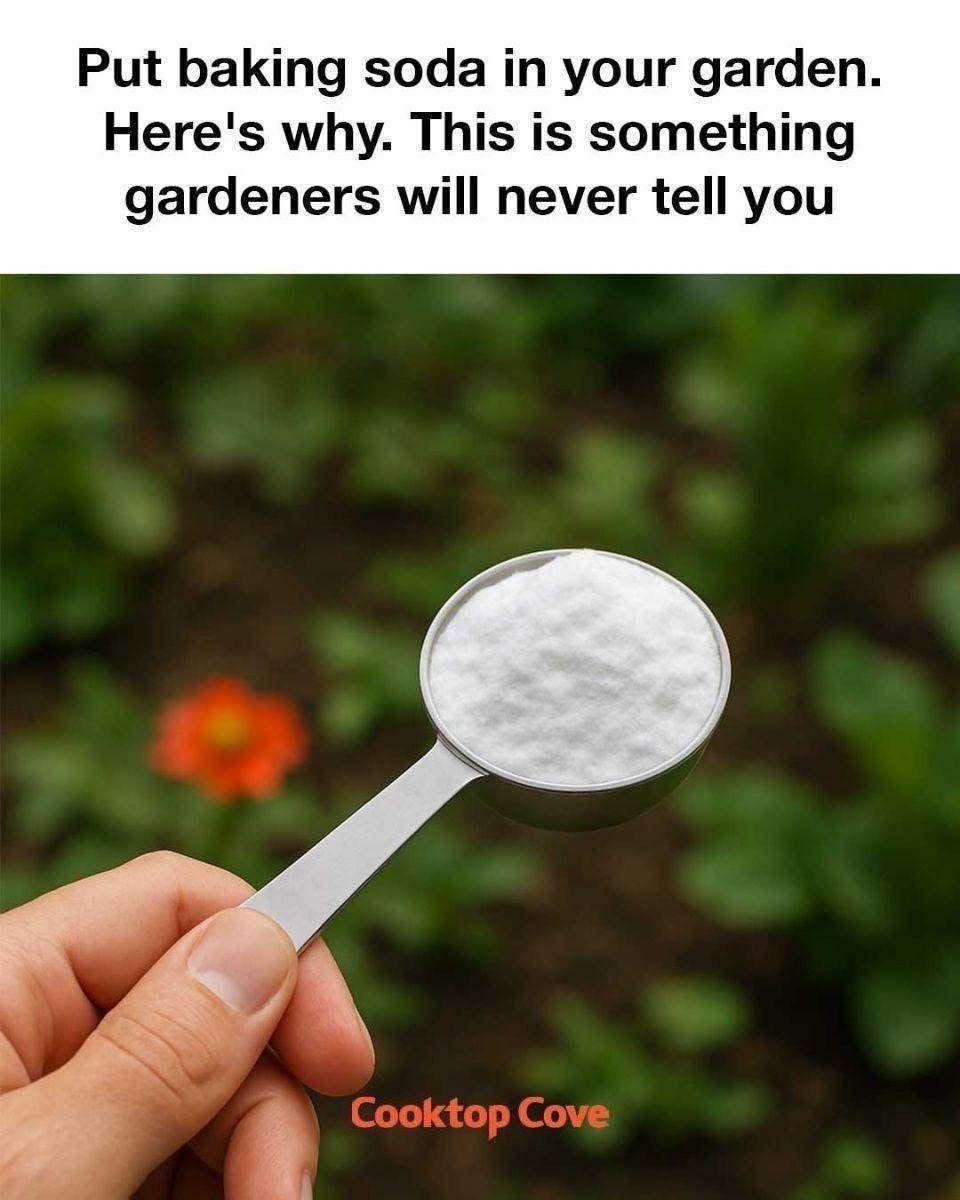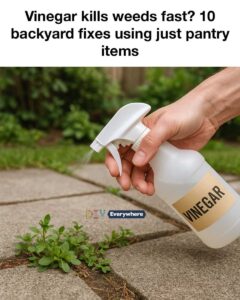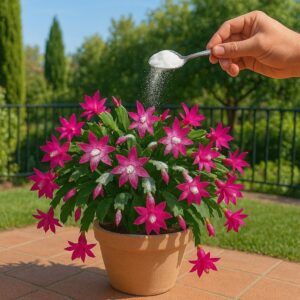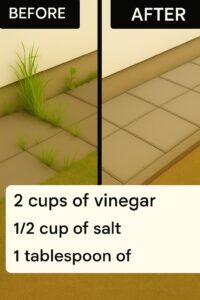Put baking soda in your garden. Here’s why. This is something gardeners will never tell you
Fights fungal diseases: Powdery mildew and other fungal infections are common garden problems. Spraying a baking soda solution on affected leaves can help stop the spread of fungi without harsh chemicals.
Balances soil pH: Baking soda is alkaline, which can neutralize overly acidic soils, creating a better environment for many plants.
Pest deterrent: Some gardeners report that baking soda helps deter certain pests, keeping your plants safer naturally.
Boosts seed germination: A mild baking soda soak can improve seed sprouting rates by softening seed coats and reducing soil acidity.
The Secret Recipe: How to Use Baking Soda in Your Garden
Here’s a simple way to harness the power of baking soda in your garden:
Fungus fighter spray: Mix 1 tablespoon of baking soda with 1 gallon of water. Add a few drops of mild liquid soap to help it stick to leaves. Spray on plants every 7–14 days, especially if you notice powdery mildew.
Soil pH adjustment: Sprinkle a small handful of baking soda around acid-loving plants (like tomatoes or peppers) to gently raise the pH. Be careful — too much baking soda can harm plants, so use sparingly.
Seed soak: Dissolve 1 teaspoon of baking soda in a cup of warm water. Soak seeds for a few hours before planting to improve germination.














Post Comment